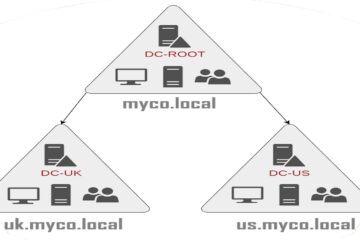In the ever-evolving landscape of cryptocurrency investment, Bitcoin has long been the kingpin. However, seasoned investors and newcomers alike are increasingly looking beyond Bitcoin to diversify their portfolios and potentially maximize returns.
Emerging altcoins present exciting opportunities for growth, offering unique features and use cases that set them apart from the crowd. One such platform gaining attention is https://immediateexbit360.org, which promises innovative solutions in the cryptocurrency space. Here, we explore some promising altcoins that investors should keep an eye on for diversification beyond Bitcoin.
Understanding Altcoins: Beyond Bitcoin’s Shadow
While Bitcoin remains the most prominent cryptocurrency, the term “altcoin” encompasses a vast array of digital currencies beyond it. These altcoins, or alternative cryptocurrencies, vary widely in their functionalities, purposes, and underlying technologies. Unlike Bitcoin, which primarily serves as a store of value and medium of exchange, altcoins often target specific niches or industries, offering solutions to various problems.
Ethereum (ETH): Pioneering Smart Contracts and Decentralized Applications
As one of the earliest altcoins, Ethereum has solidified its position as a powerhouse in the cryptocurrency space. Unlike Bitcoin, Ethereum’s blockchain facilitates the creation of smart contracts and decentralized applications (DApps), opening up a world of possibilities beyond simple transactions. With the rise of decentralized finance (DeFi) and non-fungible tokens (NFTs), Ethereum’s utility continues to grow, making it a compelling choice for investors seeking diversification.
Cardano (ADA): Aiming for Scalability and Sustainability
Cardano is a third-generation blockchain platform that aims to address the scalability and sustainability issues faced by earlier cryptocurrencies. Led by a team of academics and engineers, Cardano utilizes a proof-of-stake consensus mechanism, which is more energy-efficient than Bitcoin’s proof-of-work. With a focus on interoperability and scalability, Cardano seeks to become a robust infrastructure for building decentralized applications and conducting peer-to-peer transactions.
Solana (SOL): High-Performance Blockchain for Scalable Apps
Solana is garnering attention for its high-performance blockchain, designed to support fast and scalable decentralized applications. With its unique consensus mechanism, Proof of History (PoH), Solana boasts impressive throughput and low transaction costs, making it an attractive platform for developers. Solana’s ecosystem is rapidly expanding, with projects ranging from decentralized finance (DeFi) to non-fungible tokens (NFTs), positioning it as a contender for broader adoption.
Polkadot (DOT): Interoperability for a Multi-Chain Future
Polkadot is a multi-chain network that aims to enable interoperability between different blockchains. Founded by Ethereum co-founder Gavin Wood, Polkadot utilizes a unique sharding mechanism to achieve scalability without sacrificing security. By connecting disparate blockchains into a single network, Polkadot enables seamless communication and the transfer of assets across different protocols. As the blockchain ecosystem continues to diversify, Polkadot’s interoperability could prove invaluable for driving innovation and collaboration.
Binance Coin (BNB): Fueling the Binance Ecosystem
Binance Coin, the native cryptocurrency of the Binance exchange, has seen remarkable growth since its inception. Initially used to pay for trading fees on the Binance platform, BNB has evolved into a versatile utility token with various applications. With the launch of Binance Smart Chain (BSC), BNB has found new utility in powering decentralized finance (DeFi) applications and facilitating token swaps. As Binance continues to expand its ecosystem, BNB stands to benefit from increased adoption and utility.
Risks and Considerations
While the potential for growth in emerging altcoins is enticing, investors should proceed with caution and conduct thorough research before investing. It’s essential to consider factors such as the project’s team, technology, community support, and real-world use cases. Additionally, the cryptocurrency market is highly volatile, and prices can fluctuate dramatically in a short period. Diversification is key to managing risk, and investors should allocate their portfolios accordingly.
Conclusion: Diversifying with Emerging Altcoins
As the cryptocurrency market continues to evolve, diversifying beyond Bitcoin into emerging altcoins can provide investors with exposure to innovative technologies and potential growth opportunities. Ethereum, Cardano, Solana, Polkadot, and Binance Coin are just a few examples of altcoins with unique features and strong development teams driving their growth. However, investors should approach altcoin investment with caution, conducting thorough research and diversifying their portfolios to mitigate risk. By staying informed and proactive, investors can position themselves to capitalize on the exciting potential of emerging altcoins.




0 Comments